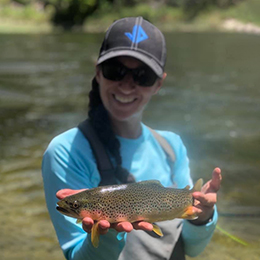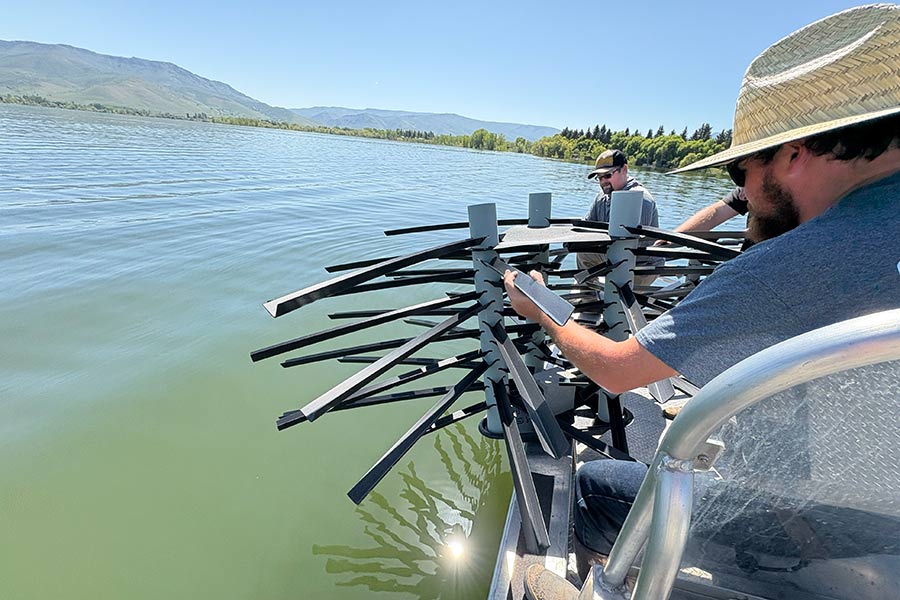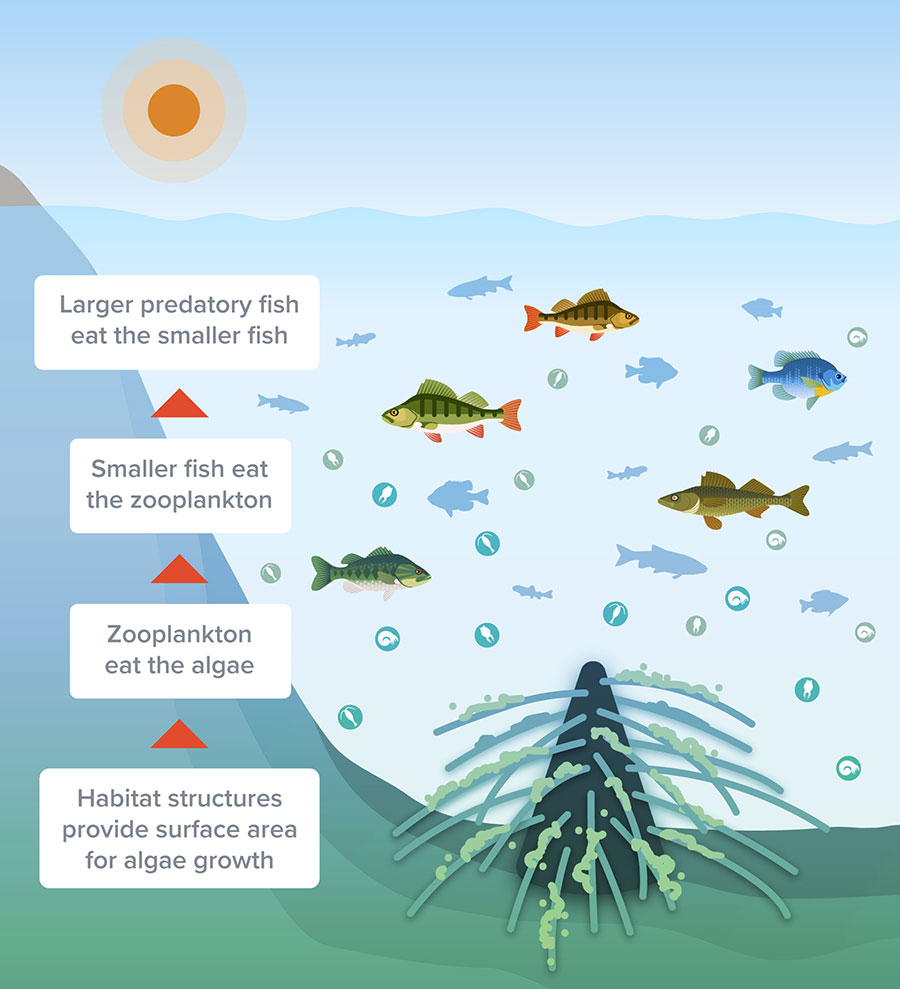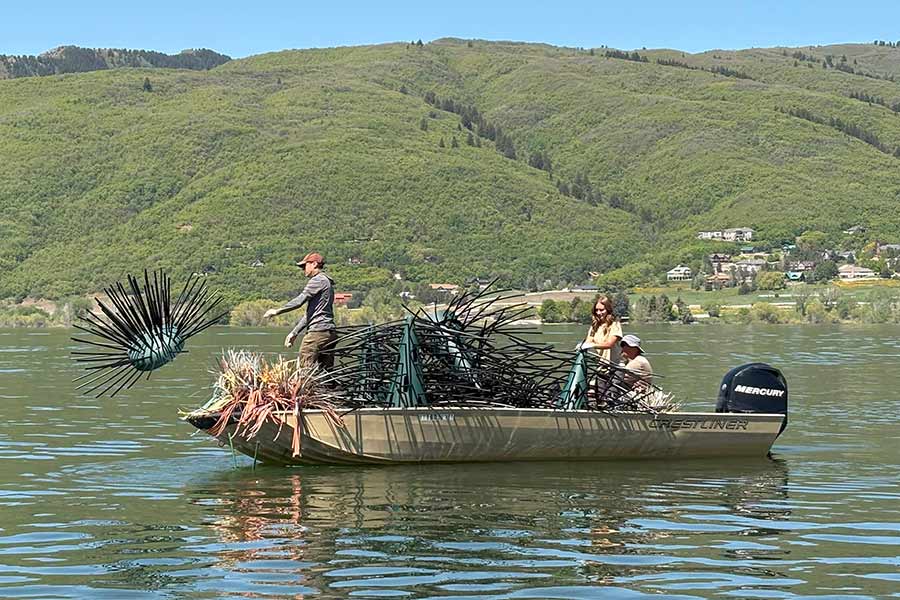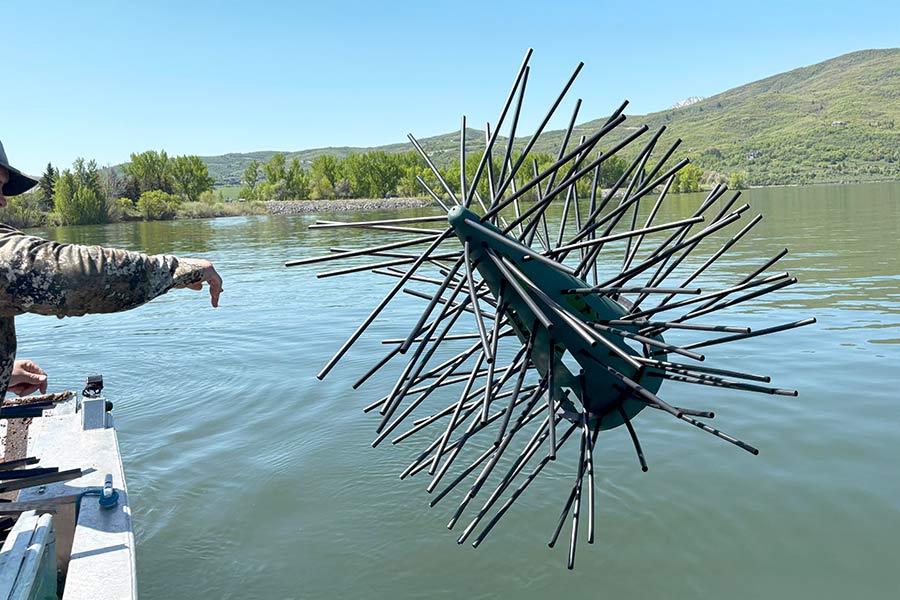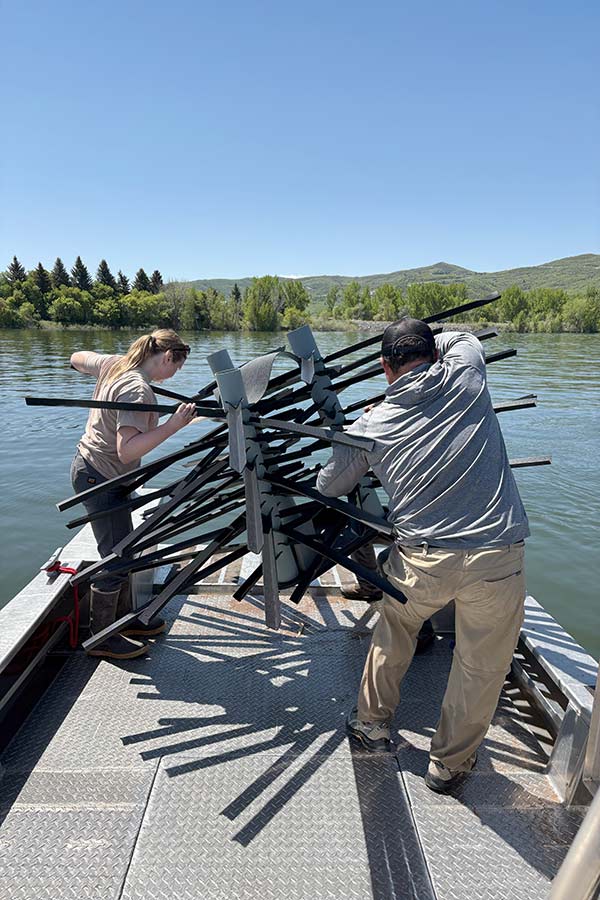Reservoir fish habitat structures: Why, where and how do we install them?
Fish habitat structures provide essential fish habitat in our aging reservoirs
By Trina Hedrick
Sportfish Coordinator
All reservoirs start off with productive fish habitat. During the initial fill of the reservoir, vegetation and natural structures like ledges, large rocks and trees are submerged, providing food sources and places for fish to find shelter from predators. This creates great habitat for structure-oriented prey species like bluegill, black crappie and yellow perch.
As a reservoir ages, its productivity declines. Vegetation dies off and large trees decompose, leaving less habitat for prey fish to find forage and cover. This creates a kind of domino effect for diverse fish populations in a waterbody. Having less structure reduces the carrying capacity (maximum population size) of prey fish the reservoir can support. If the carrying capacity of prey decreases, then so does the carrying capacity of larger predator species anglers like to catch, like walleye and muskellunge.
Mimicking natural elements
To encourage productivity in aging reservoirs, fisheries managers install fish habitat structures. These structures have natural or manufactured elements that provide a three-dimensional habitat for fish to safely hide from predators. They also provide surface area for algae to grow, in turn feeding zooplankton (the favored food of smaller fish) and on up the food chain.
The partners we work with — like the U.S. Bureau of Reclamation and water conservancy districts around the state — approve fish habitat installations because they own and manage the water in our reservoirs. They are responsible for ensuring that millions of people and farms receive their water when and as needed, and they must carefully consider the safety of boaters, recreationists, the outlet works of the dams, and more.
In some locations, we install natural materials like logs and rocks that are piled strategically and at specific depths to ensure that they never move and that they are never shallow enough to be hit by boaters. If safety is a concern, habitat structures are marked with buoys. Manufactured structures are also a good option and also must be strategically located for maximal fish use and safety of boaters and of the reservoir's outlet works.
Many of these structures are engineered with the different life stages of fish in mind:
- Spawning discs provide structure for fish to deposit or attach eggs
- Nursery structures encourage fry (newly hatched fish)
- Tree, brush and grass structures provide shelter juvenile fish
- Dock droppers and towers mimic natural cover for larger fish
Location, location, location
There are many factors that determine the best spot for installing fish habitat structure. We consider which species we are trying to benefit, as well as our ability to increase habitat in the reservoir. For example, we're more likely to make a significant impact in a small or medium-sized waterbody versus a very large one.
Habitat structures have been used all over the country to benefit fish populations. However, these types of projects can be complicated in arid states like Utah where our survival depends on being able to deliver water when and where it's needed. This is why we depend upon and appreciate the continued support from our partners. It helps us do what we need in order to ensure our fish and wildlife can thrive without negatively impacting our communities.
After installation, we continue to monitor the structures to ensure they are staying in place and are attracting fish as intended. We do this using various methods, but the best way to monitor these structures is to use sonar and underwater cameras. These surveys also help us create and adjust plans for future installations as needed.
Reservoirs all have a finite life span, and many of our reservoirs are well into that lifespan. Installing fish habitat structures helps combat this decline in many locations in Utah that have very little structure left from the initial fill. And by partnering with various organizations, we are doing it as safely and efficiently as possible.
Learn more
- New to fishing? Check out our beginner fishing resources
- Listen to our WILD podcast episode about fishing in Utah
- Visit the Fish Utah interactive map to find more information about fishing locations across the state
- Sign up to receive emailed fishing alerts and forecasts for your favorite spots
- Learn about Utah's Blue Ribbon fisheries
